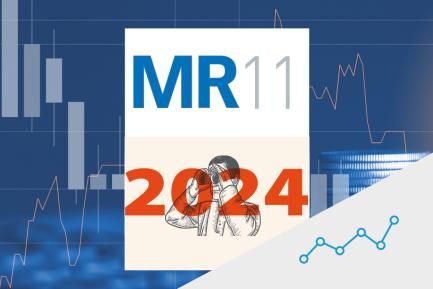Weeks of ups and downs in the financial markets

Q4 began with a continuation of the tone of volatility and uncertainty in the financial markets, albeit with an improvement during the course of October. The first few weeks of the month were marked by a renewed tightening of financial conditions, driven by signs of persistent inflationary pressures, escalating geopolitical tensions and the crisis triggered by the announcement of a fiscal stimulus plan in the United Kingdom. Subsequent sessions saw a marked improvement in investor sentiment, allowing the main risk assets to close October with gains. Among other factors, the optimism of the second half of the month was driven by the possibility that, in light of the marked slowdown reflected in the economic data, the central banks might decide to reign in the pace of their rate hikes. However, this prospect faded after the Fed’s meeting in the US in early November.

The resolution of the political crisis in the UK was also a factor favouring risk appetite in the second half of October. The financial markets welcomed Rishi Sunak’s election as prime minister, and in particular his decision to keep Jeremy Hunt as Chancellor. Expectations that the new government would remain on the path of fiscal rectitude, following the cancelation of the measures announced by the recently deposed Liz Truss, allowed most of the losses in the pound sterling and British bonds to be recovered. In our view, this episode of financial stress in the United Kingdom serves as a warning that, in a context of tightening monetary policy, the margin for manoeuvre of fiscal policy will once again be heavily influenced by the scrutiny of the financial markets (see the Focus «Stormy waters in the UK, a warning to seafarers» in this same report).

The ECB maintains the pace of its rate hikes and assesses its balance sheet reduction strategy, which will be discussed at the upcoming December meeting according to President Christine Lagarde. Thus, the official rate on the deposit facility increased in October by 75 bps to 1.50%. Lagarde confirmed that the next adjustments will be decided upon meeting by meeting and on the basis of the economic data. In addition, the ECB decided to change the conditions applicable to TLTROs beginning in November. Overall, the dovish tone of the last meeting led to a downward revision in implicit rates in the money markets and a decline in sovereign debt yields, although these movements were partially reversed at the beginning of November. In Italy, the risk premium has fallen to around 210 bps (on 4 November), following the formation of the new government under Giorgia Meloni, who confirmed the intention not to deviate from the reform programme agreed with Brussels. Another positive factor for peripheral debt was the announcement that the German government would be in favour of a new loan fund financed with EU debt.

At its meeting in early November, the central bank decided to maintain the pace of its rate hikes in order to place the official interest rate in the 3.75%-4.00% range. In his his official statement, the Fed chair Jerome Powell emphasised that the central bank could temper the pace of its rate adjustments as early as December. That said, he also made clear that it is too early to consider a pause in rate hikes and that they will most likely have to raise interest rates above the level envisaged at the September meeting (4.50%-4.75%, according to the dot plot). Other central banks in some advanced countries had already announced lower rate hikes, including in Canada (50 bps to 3.75%), Norway (25 bps to 2.50%) and Australia (25 bps to 2.85%). Meanwhile, the Bank of Japan reiterated its intention to maintain the ultra-accommodative bias in its monetary policy, accentuating the yen’s weakness against the dollar.

The increased risk appetite in the second half of October was reflected in a weakening of the US dollar, which ended October almost at parity with the euro. However, this pattern was reversed in early November after the Fed’s meeting. The equity indices, meanwhile, shortened the declines registered so far this year. In addition to the aforementioned factors, these assets found support in the corporate earnings season which, with the exception of some sectors (such as technology), did not deviate far from the expectations of the consensus. The exception was China: the benchmark stock market indices in Shanghai and Hong Kong registered significant losses in October following a ratcheting up of the authoritarian discourse during the 20th National Congress of the Chinese Communist Party and the deteriorating health situation.

Favourable weather in the northern hemisphere, the increase in gas inventories in Europe (up to 95% of total reserve capacity), as well as an increase in the supply of liquefied natural gas from the US favoured a reduction in European gas prices (the Dutch TTF) to four-month lows at the end of October, although this trend reversed slightly at the beginning of November. The implementation of measures to cut usage in most EU countries, coupled with progress in the negotiations to establish a cap on the price of gas, also contributed to this correction. The price of a barrel of Brent oil, in contrast, ended October around 10% up, despite remaining highly volatile. In addition to the easing of the exchange rate against the dollar, the prospect of a possible relaxation of the zero-COVID policy in China improved the outlook for future crude oil demand, in a context marked by production cuts by oil-producing countries and as the date for the application of the EU embargo on Russian oil in December draws closer.



